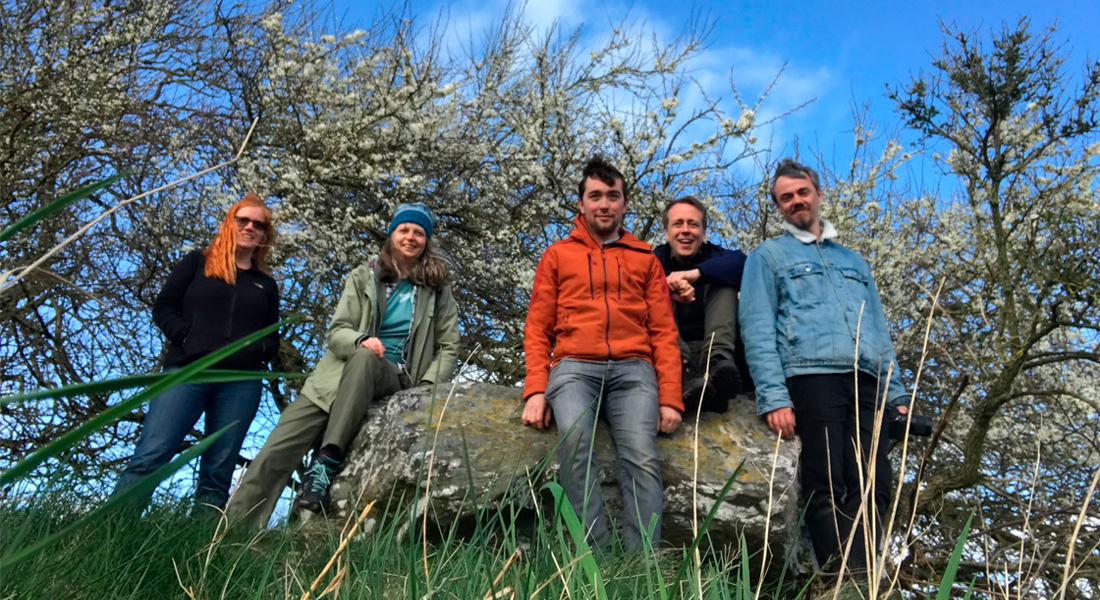Deep histories of migration: the Early Neolithic around the North Sea
The project focuses on the long-term networks and connections between Denmark, Britain and Ireland and will reveal how these connections developed and changed from the start of the Neolithic, c. 4000 BC, over the following centuries up until c. 3300 BC.

This project explores an archaeological case study focused on the start of the Neolithic. This period saw one of the most dramatic changes in prehistory as agriculture and its associated practices spread into Europe through the migration of people, as shown by ancient DNA. However, we cannot understand migration just through aDNA. The project aims to uncover the longer-term impact of migration, which includes the relationship between different forms of contact and material culture change. We will reveal how these connections developed and changed during the Early Neolithic.
In southern Scandinavia, Britain and Ireland, the Neolithic saw the first widespread use of domesticated plants and animals, the first construction of monuments and the creation of prestige items of quarried and mined stone from around 4000 BC. However, the archaeological evidence shows regional differences within these areas, so the uptake of Neolithic material and practices was not uniform. This is even though there was a lot of migration and mobility linking different regions, as recently shown by aDNA analysis. So what was the role of these long-distance connections in people’s lives? When and why did they choose to become different from one another?
The project puts the archaeological evidence for migration centre-stage. Because mobility and migration are social processes, they will not simply proceed along the shortest possible routes in limited, one-off events and/or in just one direction of influence. Instead, there is potential for continued mobility and migration over the longer term. The Deep histories of migration project investigates this possibility archaeologically. We want to construct a theoretically aware model in which genetic and archaeological evidence are combined to provide a nuanced narrative of the role of migration in Neolithic society. The project will deliver this by focusing on sets of complex, but connected practices. In our case, these are details of monument construction and deposition from chosen regions. These practices were important to people, and so can help us to tease out multiple possible links and migrations from different origins.
We will focus on selected micro-regions within southern Scandinavia, Britain and Ireland. A detailed comparison will allow an assessment of whether initial migration had a long-lasting after-effect in structuring contacts, and whether there were points at which such contacts changed, diversified or were even no longer sought at all. These regions have been selected on the basis of their archaeological signatures as those most likely to provide rich sources of evidence for comparison, as well as an even geographical spread across the study area. They are:
- Northern Jutland
- Funen
- West Wales
- North-western Ireland
- Central-eastern Ireland
- Central-western Scotland
- South-eastern England
This video is an uncut gameplay demo of the proof-of-concept game for our research paper "Gamifying the past: When archaeologists make video games". All events and topics are based on archaeological, genetic, and linguistic research on the Neolithic.
In this video we demonstrate a gameplay where the two conversational Convai NPCs argue with each other about what is most important when building a dolmen. They have contrasting perspectives (modern scientific/practical vs. prehistoric/spiritual) on the topic, and at the end ask the player for an opinion, which they take into consideration.
- Cummings, V., R. Iversen & D. Hofmann. 2025. The early Neolithic of Northern Europe. New approaches to migration, movement and social connection. In D. Hofmann, V. Cummings, M. Bjørnevad-Ahlqvist & R. Iversen (eds): The early Neolithic of Northern Europe. New approaches to migration, movement and social connection, 11-19. Leiden: Sidestone Press.
- Hofmann, D., V. Cummings, M. Bjørnevad-Ahlqvist & R. Iversen, eds. 2025. The early Neolithic of Northern Europe. New approaches to migration, movement and social connection. Leiden: Sidestone Press.
- Cummings, V., Hofmann, D., Bjørnevad-Ahlqvist, M. P., & Iversen, R. (2022). Muddying the Waters: reconsidering Migration in the Neolithic of Britain, Ireland and Denmark. Danish Journal of Archaeology 11, 1-25.
Researchers
Internal
| Name | Title | Phone | |
|---|---|---|---|
| Iversen, Rune | Associate Professor - Promotion Programme | +4593509427 | |
| Nørtoft, Mikkel Johansen | Postdoc | +4535328382 |
External
Cummings, Vicki, Professor, Cardiff University
